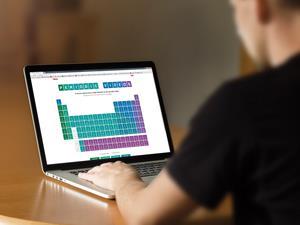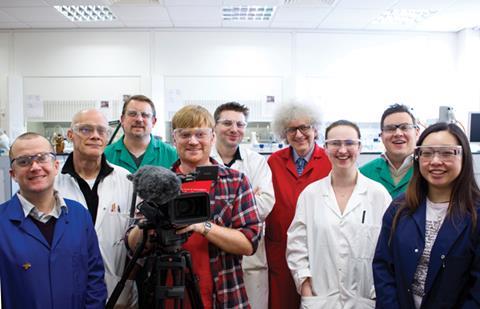Paul MacLellan looks at a new collaboration between YouTube’s chemistry stars and TED-Ed
http://ed.ted.com/periodic-videos

The Periodic Table of Videos has been posting fascinating videos about chemical elements (and other chemistry) on YouTube for over six years. The collaboration between video journalist Brady Haran and chemists at the University of Nottingham, most prominently Martyn Poliakoff, began with the aim of producing videos for each of the 118 known elements.
Although the project has since moved on to include videos on compounds, reactions and topical chemistry insights, the original and updated videos on the periodic table are a fantastic resource for anyone learning about chemistry.
Including demonstrations of reactions and discussion of the history and properties of each element, each video acts as a rich introduction to the chemistry of the elements. For example, a video about oxygen demonstrates the paramagnetic properties of the liquid, another shows the explosive reaction of caesium with water, while the video on lead explains the chemistry behind wartime colour-changing submarines.
Videos in learning
As their content is so rich, teachers and educators have found innovative ways to incorporate the Periodic Table of Videos into their own teaching.
Now, the project has partnered with the TED-Ed platform to make an interactive periodic table, allowing students to explore the videos by clicking on elements, and enabling teachers to build quizzes and lessons around the content.
‘We are always mindful that teachers want to use our videos in class, but maybe in contexts and ways we have not imagined,’ says Brady. ‘We liked the idea of the videos being used in new contexts, and the TED-Ed platform is really fun, flexible and easy to use.’
While the site provides an attractive interface for exploring the videos, the potential of the platform does not end there. After each video the viewer can take a quiz based on its content. There are five questions on each element.
The questions in the quizzes are fairly straightforward, simply testing the observation and memory of the viewer, but any lesson based around this material isn’t restricted to the pre-set questions. When you log in to the site, you are able to customise the quizzes – changing, adding, or even replacing, the questions for each of the elements. Then when students log in they are able to take quizzes based on each element that have been tailored to their level and syllabus.
This flexibility is at the heart of the collaboration’s aim to allow teachers to use the Periodic Table of Videos in new ways. ‘The TED-Ed site is quite clever in the way it lets teachers, or anyone for that matter, adapt lessons to their own purposes,’ says Brady.

Down the rabbit hole
The site also provides links to other online resources and information specific to each element. A good example is the lesson on palladium that links to a presentation on the palladium-based research that won the 2010 Nobel prize for chemistry. The lesson on iodine is another and links to a beautiful slow-motion video of an iodine clock reaction. There are links too, to the Royal Society of Chemistry’s Visual Elements Periodic Table and to pages of data and other information on each element.
Lastly, there is a discussion section within each lesson that lets students ask questions and discuss the content of the videos with teachers and each other.
The extra information and resources add a layer of context to the core information presented in the video and provide jumping-off points for students to dig deeper. Indeed, I often found myself falling down the rabbit hole of curiosity after watching a video on an element I thought I knew well.
After seeing how his videos have inspired chemistry students in the past, Brady is excited about how teachers will use this new resource.
‘We look forward to seeing what people come up with.’









No comments yet